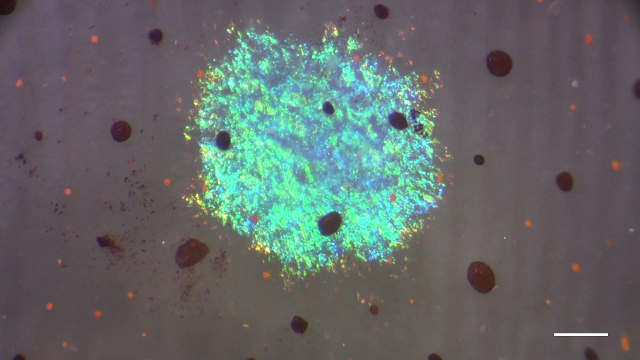
Squid and their relatives--a group of animals known as cephalopods--have the world's best skin. And it's not because they moisturize, lack pimples, or tan without ever burning. It's because their skin is a canvas of endless possibilities.
Other animals can change their looks, of course, with chameleons being the most famous. What sets cephalopods apart is a combination of speed (squid can flash between colors several times per second) and diversity. Virtually no hue is off-limits to these creatures, thanks to two separate layers of color-changing skin.
On top is a layer of chromatophores--tiny elastic sacs of pigment surrounded by muscle fibers, each connected to neurons that run straight back to the squid's brain. When the squid tells the muscles to contract, they stretch the sac wide, turning the chromatophore "on" to show the pigment. When the muscles relax, the sac turns "off," shrinking to a nearly invisible dot.
Chromatophore behavior is spectacularly showcased in this viral video by Backyard Brains, in which an iPod was wired up via an electrode to stimulate a squid’s nerves:
As you can see, chromatophores are awesome. But they are also limited to yellow, red, brown or black. To achieve fantastic glittering hues of blue and green, cephalopods rely on the second layer of skin, which is full of a different kind of structure called iridophores.
